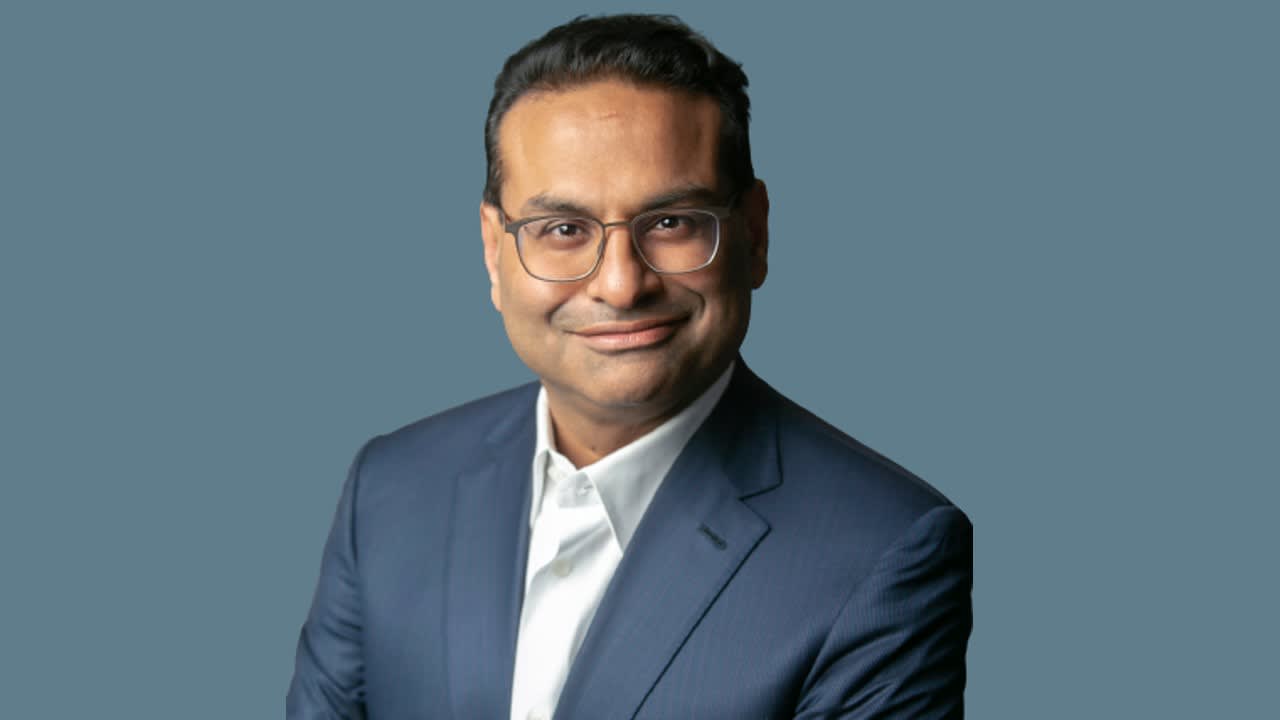Starbucks New CEO

Laxman Narasimhan, the new CEO of Starbucks, is a seasoned business leader with a rich background in consumer goods and a deep understanding of the global market. His appointment marks a significant shift for the coffee giant, as he takes the reins from interim CEO Howard Schultz.
Background and Experience
Prior to joining Starbucks, Narasimhan held several key leadership positions at PepsiCo, where he honed his expertise in brand building, innovation, and global expansion. Notably, he served as CEO of PepsiCo Latin America, overseeing a vast and diverse market. This experience equipped him with valuable insights into navigating complex cultural landscapes and adapting strategies to local consumer preferences. He also played a crucial role in PepsiCo’s digital transformation, leading the development of e-commerce platforms and customer engagement initiatives.
Circumstances Surrounding Howard Schultz’s Return and Departure, Starbucks new ceo
Howard Schultz, the iconic founder of Starbucks, returned as interim CEO in April 2022, following a period of significant challenges and internal unrest. His return was seen as a move to stabilize the company and address concerns regarding employee morale, operational efficiency, and customer experience. However, Schultz’s tenure was marked by controversies, including a controversial unionization drive among Starbucks employees. After a tumultuous year, Schultz stepped down in March 2023, paving the way for Narasimhan’s appointment.
Key Challenges and Opportunities
Narasimhan’s leadership faces a multifaceted landscape, characterized by both challenges and opportunities.
Challenges
- Unionization Efforts: The ongoing unionization efforts among Starbucks employees pose a significant challenge for Narasimhan. The company has faced criticism for its handling of the unionization drive, and Narasimhan will need to navigate this complex issue with sensitivity and strategic planning.
- Economic Headwinds: The global economy is facing a period of uncertainty and volatility, with rising inflation and interest rates impacting consumer spending. Narasimhan will need to navigate these economic headwinds and ensure Starbucks remains competitive in a challenging market.
- Competition: The coffee industry is highly competitive, with established players like Dunkin’ and McDonald’s, as well as emerging independent coffee shops, vying for market share. Narasimhan will need to differentiate Starbucks and maintain its brand leadership in a crowded market.
Opportunities
- Digital Transformation: Starbucks has made significant strides in its digital transformation, but there is still room for growth. Narasimhan can leverage technology to enhance the customer experience, improve operational efficiency, and expand into new markets.
- Global Expansion: Starbucks has a strong global presence, but there is still potential for further expansion. Narasimhan can capitalize on this opportunity by tailoring products and services to local preferences and exploring new markets.
- Sustainability: Sustainability is becoming increasingly important for consumers, and Starbucks has made progress in its sustainability initiatives. Narasimhan can build on this foundation by implementing more ambitious sustainability goals and showcasing Starbucks’ commitment to environmental responsibility.
Narasimhan’s Vision and Priorities

Laxman Narasimhan, Starbucks’ new CEO, has a clear vision for the company’s future, focusing on growth, innovation, and customer experience. He plans to leverage Starbucks’ global presence and strong brand recognition to drive expansion and enhance its offerings.
Narasimhan’s Key Priorities
Narasimhan’s vision for Starbucks is rooted in three key priorities:
- Growth and Expansion: Narasimhan aims to accelerate Starbucks’ growth by expanding into new markets and developing innovative products and services. This includes exploring new formats like drive-thrus and mobile ordering, as well as investing in emerging technologies like artificial intelligence and digital payment systems. He aims to expand the company’s footprint in existing markets and explore new territories, particularly in Asia and the Middle East, where coffee consumption is on the rise.
- Customer Experience: Narasimhan recognizes the importance of delivering a seamless and personalized customer experience. He plans to enhance Starbucks’ digital capabilities and improve its mobile ordering and loyalty programs. He also aims to personalize the customer experience by leveraging data analytics and offering tailored recommendations. His goal is to create a more personalized and convenient experience for customers, regardless of their location or preferred method of interaction.
- Employee Engagement: Narasimhan understands that engaged employees are crucial for driving customer satisfaction and business success. He plans to invest in employee training and development programs, create a more inclusive and supportive work environment, and improve compensation and benefits. He also aims to empower employees to be more involved in decision-making processes, contributing to a more positive and productive workplace.
Comparison with Schultz’s Leadership
Narasimhan’s vision for Starbucks shares some similarities with that of Howard Schultz, the company’s founder and former CEO. Both leaders emphasize the importance of customer experience, innovation, and employee engagement. However, there are also some key differences in their leadership styles.
“Narasimhan’s approach is more data-driven and focused on efficiency, while Schultz was more charismatic and driven by a passion for coffee and the Starbucks brand.”
Narasimhan is known for his analytical approach and his ability to drive operational excellence. He is expected to bring a more strategic and data-driven approach to Starbucks’ operations, while Schultz was more focused on the emotional connection between Starbucks and its customers.
Impact of Narasimhan’s Leadership
Narasimhan’s leadership is expected to have a significant impact on Starbucks’ employees, customers, and overall business strategy.
“His focus on digital innovation and operational efficiency is likely to lead to a more streamlined and technologically advanced customer experience.”
This could potentially attract new customers and improve customer satisfaction, while also enhancing employee productivity and efficiency. However, it’s important to note that Narasimhan’s emphasis on efficiency could also lead to cost-cutting measures, which might impact employee morale and benefits.
Industry Impact and Future Outlook

Narasimhan’s leadership at Starbucks has the potential to significantly impact the broader coffee industry, shaping its future trajectory and influencing competitors’ strategies. His experience in consumer goods and focus on innovation are likely to drive changes in the industry, pushing other players to adapt and innovate.
Impact on the Coffee Industry
Narasimhan’s vision for Starbucks emphasizes innovation, digitalization, and a focus on customer experience. This approach is expected to have a ripple effect on the coffee industry, prompting other players to adopt similar strategies. For example, competitors may need to invest more in digital platforms, loyalty programs, and personalized offerings to keep up with Starbucks’ evolving approach. Narasimhan’s emphasis on sustainability and ethical sourcing could also influence industry standards, encouraging other coffee companies to adopt similar practices.
Starbucks’ Future Performance and Growth
Under Narasimhan’s leadership, Starbucks is expected to continue its growth trajectory, driven by its global expansion, digital initiatives, and focus on customer experience. The company’s commitment to innovation and personalized offerings will likely attract new customers and enhance customer loyalty. Starbucks’ focus on sustainability and ethical sourcing could also resonate with consumers, further boosting its brand image and driving growth.
Challenges and Opportunities for Starbucks
While Starbucks faces opportunities for growth, it also faces challenges in the evolving coffee market. Increasing competition from independent coffee shops and emerging brands, coupled with changing consumer preferences, poses challenges. The company must adapt to evolving consumer trends, such as the increasing popularity of specialty coffee and alternative brewing methods. Additionally, Starbucks needs to navigate economic uncertainties and geopolitical tensions, which can impact consumer spending and supply chains.
Starbucks new ceo – Starbucks has a new CEO, Laxman Narasimhan, who is ready to take the coffee giant to new heights! He’s got big shoes to fill, following in the footsteps of Howard Schultz, who led the company for decades. Want to know more about the fascinating journey of ceo of starbucks and how he transformed Starbucks into a global phenomenon?
We’re excited to see what Narasimhan brings to the table and how he’ll continue to shape the Starbucks experience for all of us coffee lovers!
Starbucks’ new CEO, Laxman Narasimhan, has a lot on his plate! He’s got to keep the coffee flowing, the baristas happy, and the profits growing. One way he might do this is by looking at the business model of other successful companies, like starbucks chipotle , which has a strong focus on fresh ingredients and customer experience.
Only time will tell how Narasimhan will lead Starbucks into the future, but one thing’s for sure: it’s going to be interesting!
